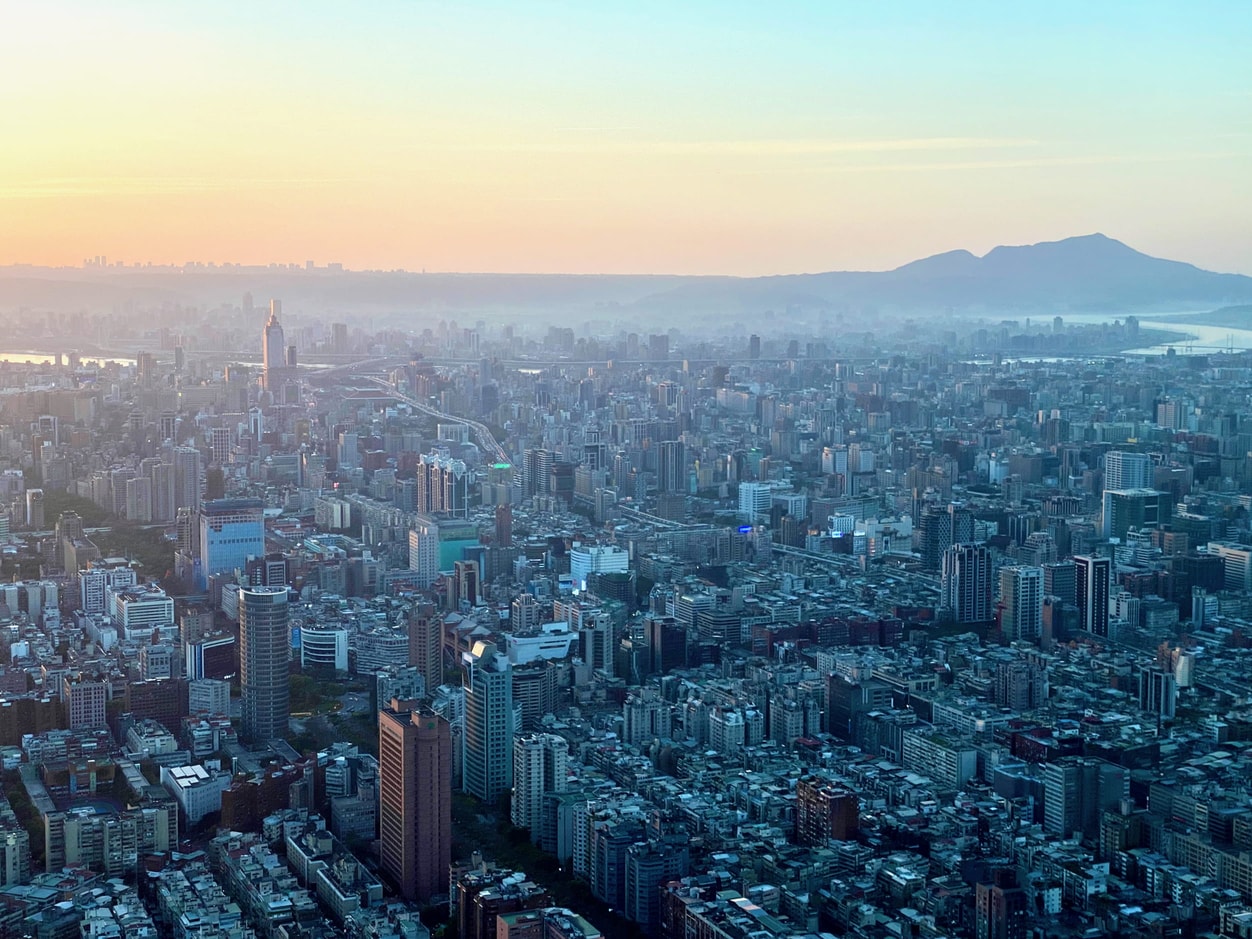Taiwan
Taipei
Taipei is the capital and largest city01 of Taiwan, the island nation that was most recently ruled by the Japanese (1895–1945), and then the losing side of the Chinese Civil War (1945–present). Things were pretty rough under martial law for about forty years, then ✨ democracy ✨ happened, and now Taiwan is this super awkward state that nobody is supposed to technically call a country because China still says it owns it.




New Taipei fits neatly around this, a strange jigsaw piece.
Launching our 2023 attempt at slow(er) travel, we spent one month in Taipei. This was enough time to get many tastes of the metro area, though I still can’t really say that I know the city.
The urban area is hyper-developed. The subway system is just one step down from Seoul’s,02 and connects to vast underground malls that create multi-dozen exit labyrinths.03 There’s a little bit of everything, and a lot of some things (like bubble tea shops—sometimes half a dozen on one block).
Prices created a forcing function to develop more local tastes. While familiar comforts were available, they were priced at or above Western expectations. A craft IPA? $10. A craft pour-over coffee? $4–6 (!). Not unthinkable, but compare to ubiquitous delicious street food that would serve a filling lunch or dinner for $2–3.



This beer spot, as Western-catering as it was, still earned its spot as our favorite due to nice touches like beautiful graphic design, Jenga, and zen rock gardens beneath your table. Their beer draft system (where are the kegs?!) baffles me to this day.
Taipei’s street markets drew crowds ranging from moderately dense to claustrophobic. They were packed the way you’d expect but, in my experience, rarely actually see in Asia.


If Taipei had a downside for me, it’s that the whole thing felt homogenously moderately dense to the point of me never being able to orient myself. The city is bordered on three sides by rivers and one side by mountains, but within it, there’s a uniform packing of concrete, tiles, and glass. Even Taipei 101, unthinkably massive compared to the other buildings, is rarely visible. On clear afternoons, we’d try to go outside to soak up some sun, only to discover that every local park we tried had no sunlight—the sun sank too quickly behind the surrounding residential towers.


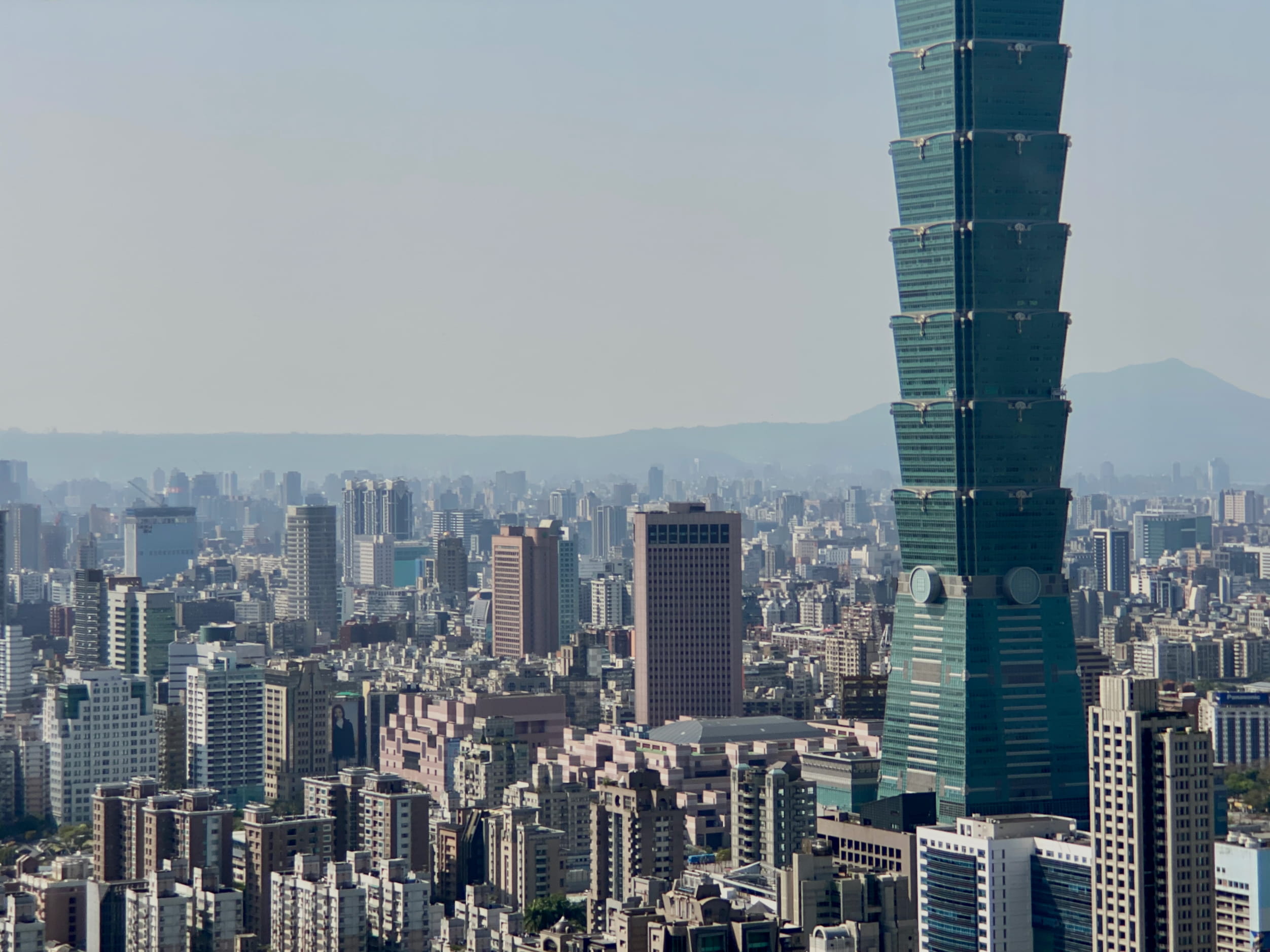
Top: Deep in the residential maze. Middle: Taipei abuts forest fingers. Bottom: Taipei 101 completely dunking on all buildings nearby. Its top ~1/3 is still above the photo.
There are some decently-sized parks, like the 2/28 Peace Park04 or Daan Forest Park, which one can visit for a dose of sun and wind. But even they felt like parks designed for you to walk through rather than hang out in. We visited them several times but they never really hooked us.
The best nature reprieve was to rent bicycles and ride along one of the many riverside parks. I can’t praise enough these greenery-lined waterways; collectively, they might even rival Seoul’s parks along the river Han, and that’s my favorite part of Seoul. At this point, I think any city that has major waterways and doesn’t build great parks alongside them is committing a crime of opportunity.
A month is an interesting amount of time to spend somewhere. I think it’s still too short to do any serious community building. For me at least, three months feels like about the minimum time span where I’d consciously go and seek out new connections. Maybe two months.05 But one month, especially with visitors,06, a huge city to explore, and migrating the home base once, it was easy to stay in our own bubble. That said, we had positive interactions across Taiwan whenever we encountered folks who spoke some English.
Let’s get into more detail, and start with the most important topic: the food.
Food
In addition to Taiwanese mainstays like beef noodle soup, braised pork buns, mango shaved ice, and bubble tea, there was a considerable amount of Japanese food available.07 Hot pot was absolutely everywhere. Our favorite was a particular lady selling scallion pancakes wrapped around molten eggs.
Just for you, I have prepared a collage. Please behold.





















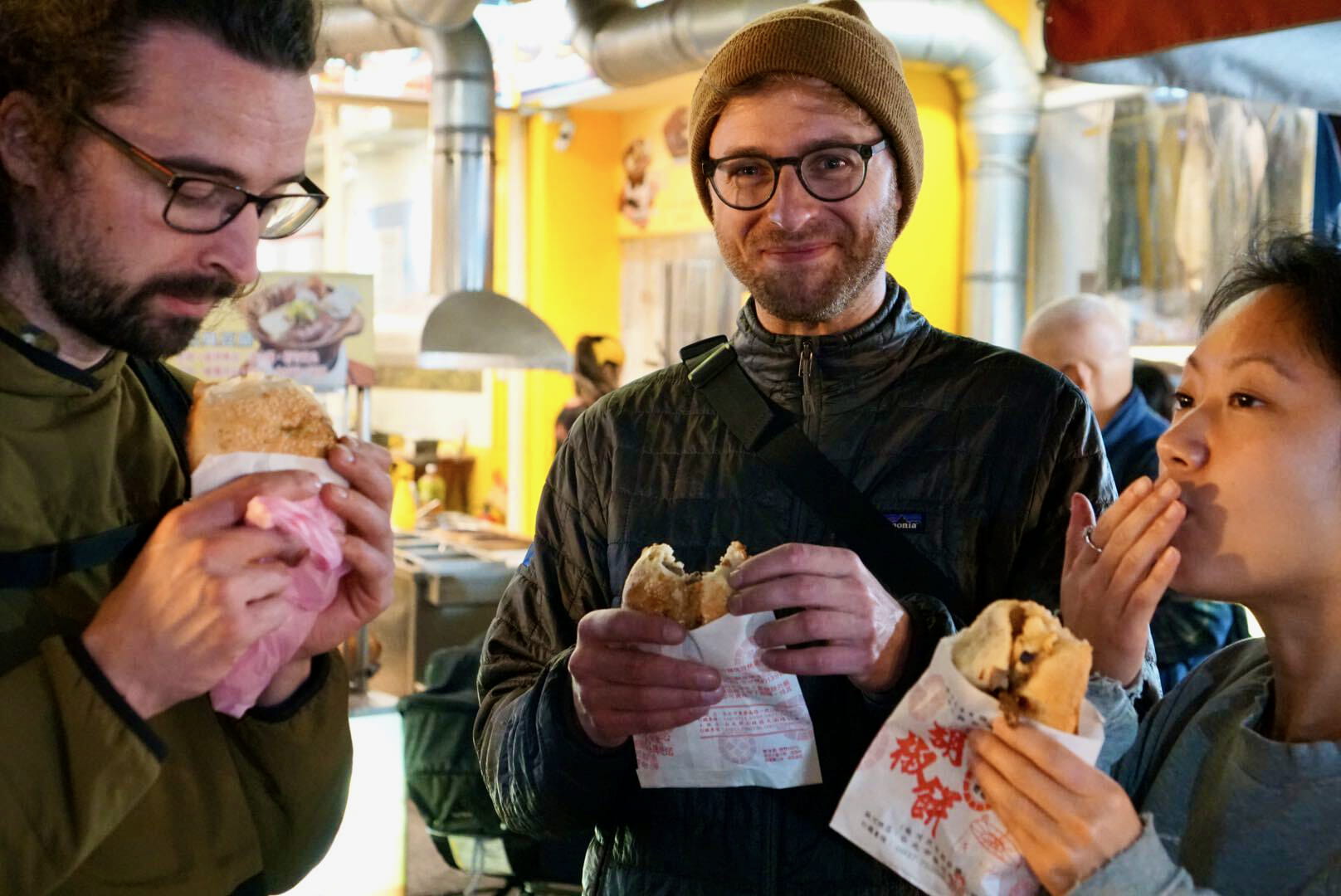
The last four photos are by Riley. Thank you, Riley!
We initially had a swing and a miss trying Taipei’s cocktails. But lucky for us, on our way back through the city, we tried out another bar, Placebo. They served up the best of Taiwan’s style of craft drinks: heavily tea-inspired, emphasizing floral, earthy flavors and local botanicals, liquors, and vinegars.


We also worked hard sampling Taiwan Beer.

In our defense, we would have finished the tower if I’d started collecting cans earlier.
Around Town
Fresh off the plane, having not been in nearly ten years, I saw Taipei as a mixture of Japan, mainland China, Hong Kong, and a sprinkling of Vietnam. This is wrong, of course, but you compare to what you know. In time, I’m glad to say, it has become its own point of reference.


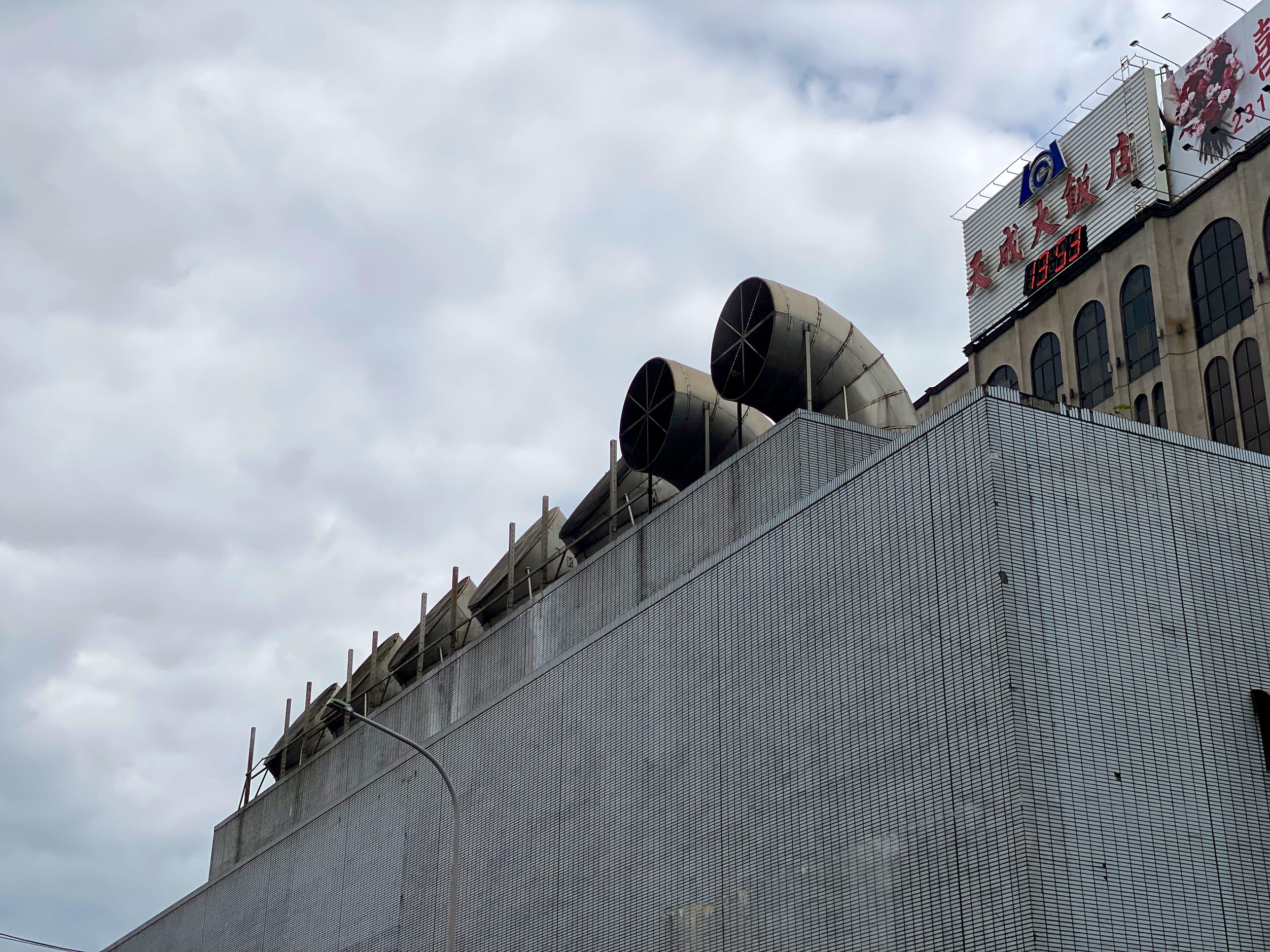





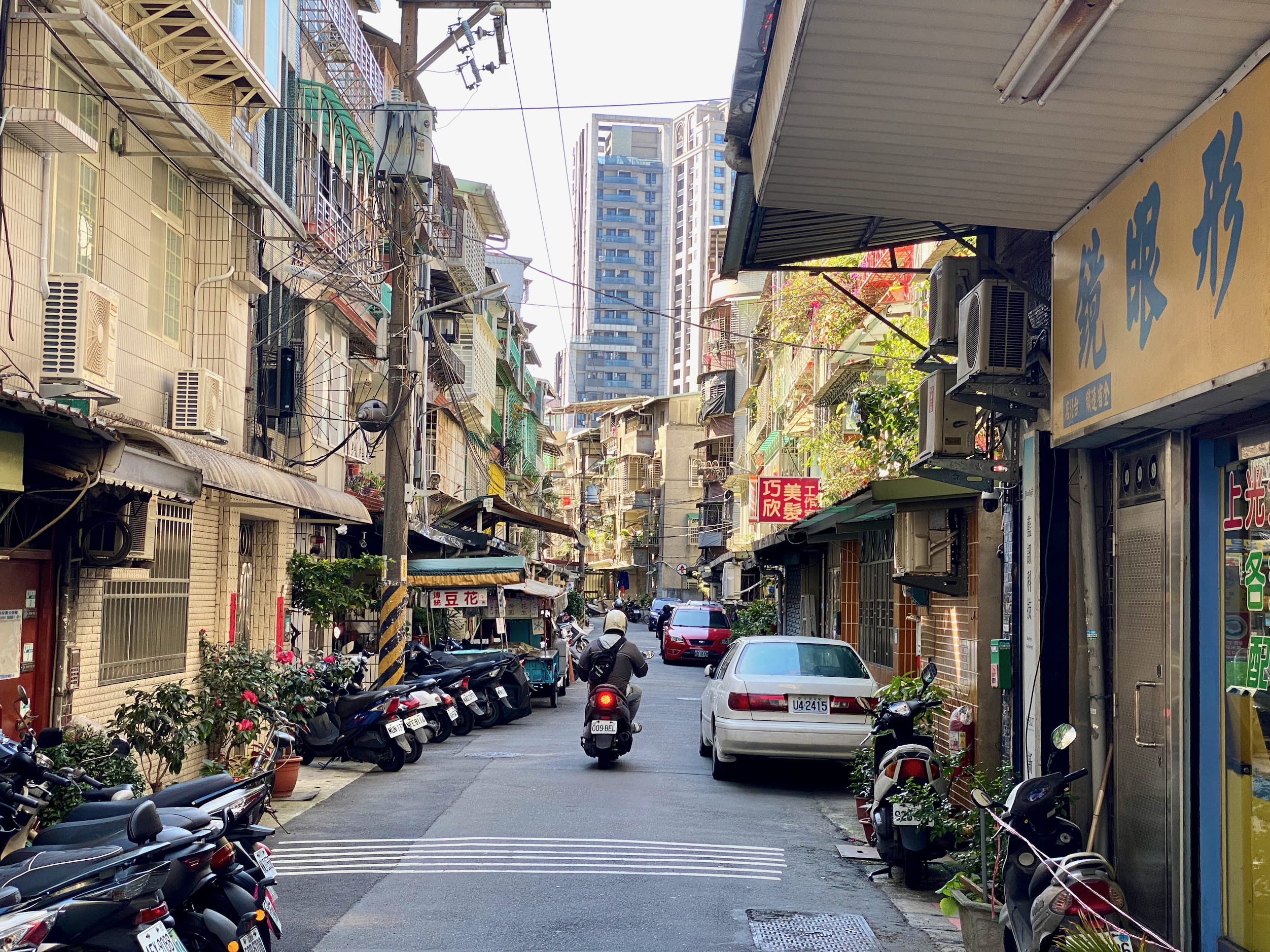







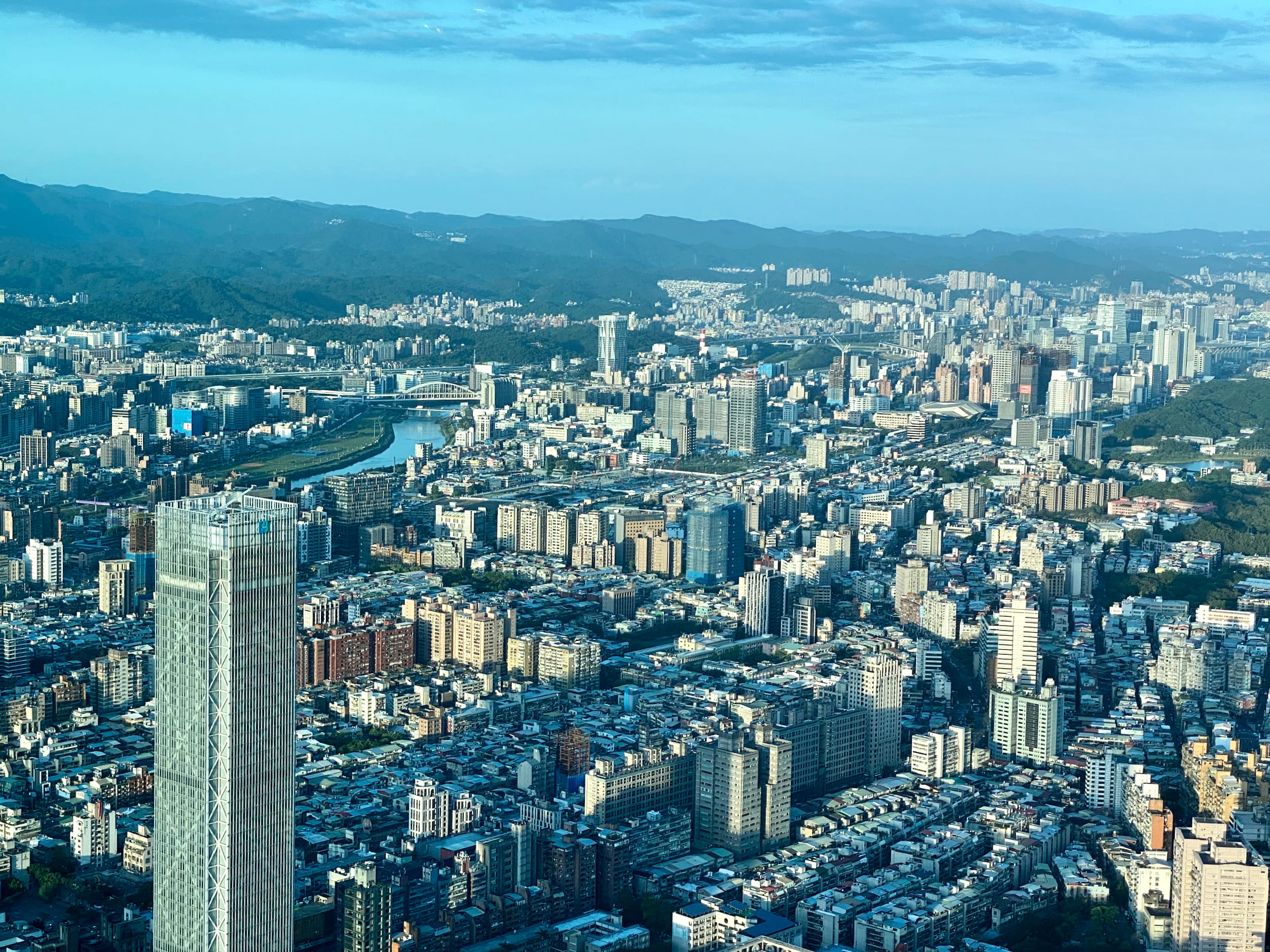

A style of apartment I noticed and immediately wanted to live in was the garden-balcony type, which we observed in neighborhoods’ ritzier fringes.
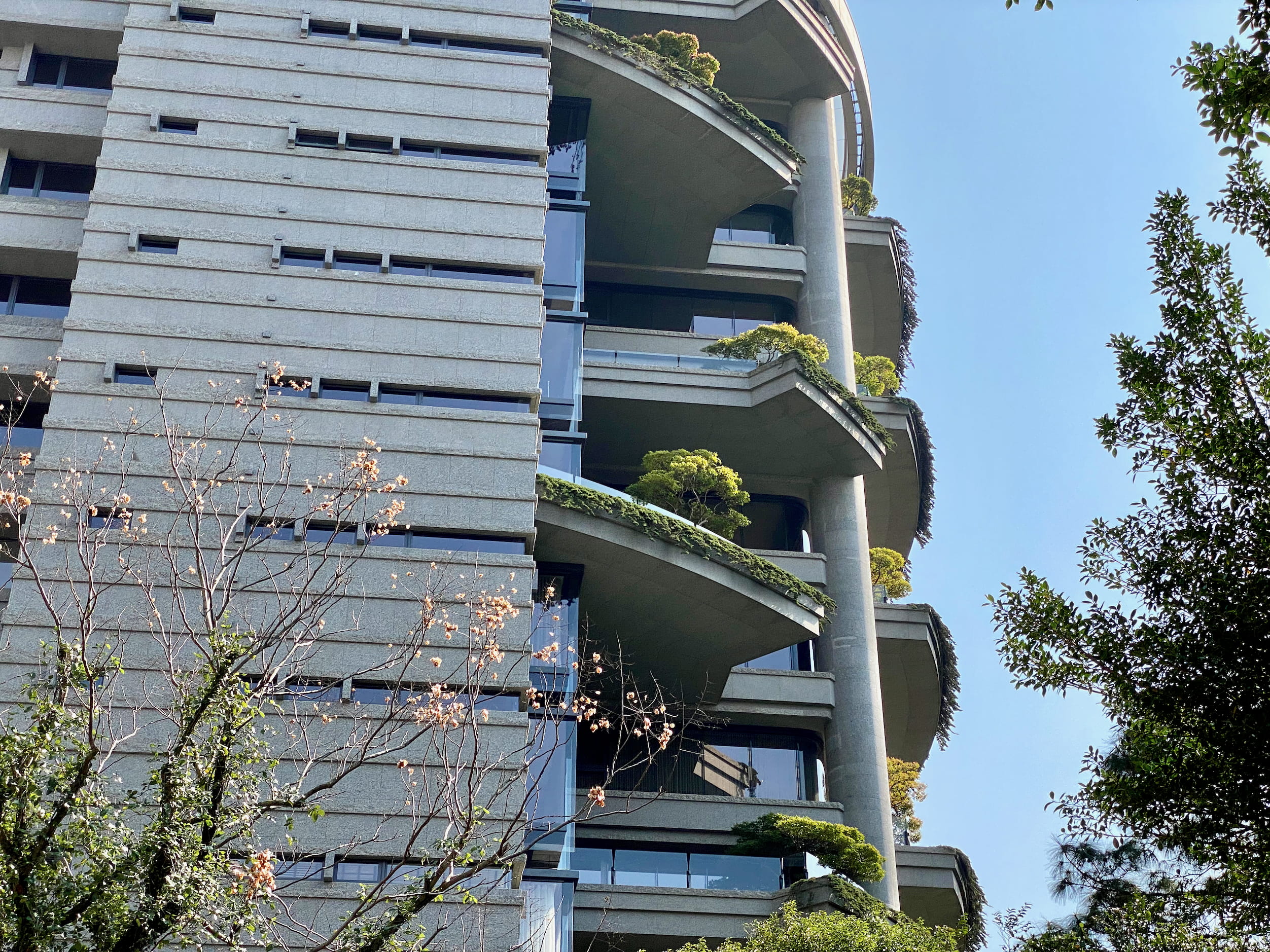

Chinese Characters
Preparing for when we’d finally get to go to Japan, I’ve spent a handful of months learning some Japanese. One component of this is learning some Chinese characters, which Japanese has repurposed as a component of its writing system. This gave me just enough context to try deciphering some of the written Chinese in Taiwan.
To my surprise, this worked better than I’d anticipated (which was: not at all). I’m not sure it ever gave me any genuinely new information, but it was fun.08
A part of this fun was Taipei’s name itself. Taipei is written as two characters, 台北.
- 台 (“Tai”) is just short for “Taiwan”
- 北 (“pei”) means “north”
This checks out, since Taipei is the main city in northern Taiwan. Armed with that knowledge, plus some basic characters (like other cardinal directions), you can guess the meanings of several Taiwaneese cities we’d visit or pass through:
- 台北 = Taipei = Tai(wan) north
- 台中 = Taichung = Tai(wan) middle
- 台南 = Tainan = Tai(wan) south
- 台東 = Taitung = Tai(wan) east
But there’s a twist. Look how these two signs, both in Taipei, write “Taipei” (I’ve circled it in each).


Notice the second one? The first character (Tai) is written as 臺 instead of 台. You may have heard before of Traditional Chinese and Simplified Chinese. I originally thought that this is that at work: that 臺 is traditional and 台 is simplified. Taiwan, like Hong Kong and Macau, did not switch to simplified Chinese when (mainland) China promoted the switch.09 As such, the writing in Taiwan is generally in traditional, not simplified, Chinese.
Knowing this, and seeing those two signs, I assumed that some simplification had still made its way into official script. The 臺北 sign certainly looks older than the 台北 one, doesn’t it?
But then, another twist: look at these old newspaper clippings from a museum (I’ve circled two areas of interest):

That’s right, both 臺北 and 台北 appear! What gives? Here were some ideas:
- The clippings are actually from different years
- One clipping is from Taiwan, one from China
- Both 臺北 and 台北 were (are?) used interchangeably
It turns out that this is even more complicated than I’d thought.10 While 臺 is written as 台 in simplified Chinese, the character 台 also exists in traditional Chinese and has its own meaning and usage. From best I can tell—and I neither am a linguist nor have any real knowledge of Chinese—the 臺 → 台 replacement in Taiwan is an organic process, similar to writing USA instead of United States of America. Simplified Chinese made this swap official, but in traditional Chinese the usage varies.11
One final thing about Chinese characters that hit me when I was in a museum looking at a 500-year-old book:
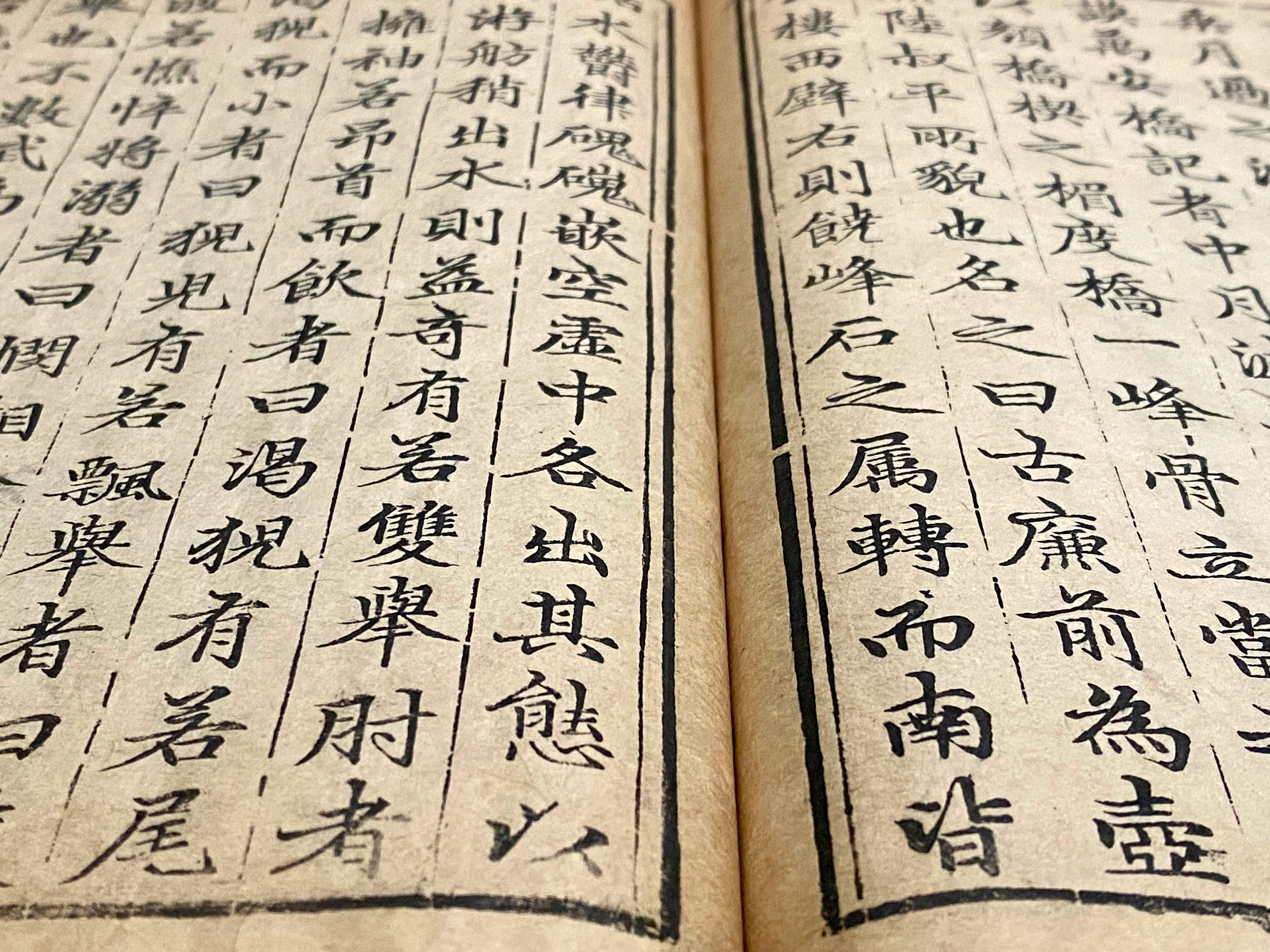
I viscerally felt the weight of time and tradition when I realized the few characters I know are easily recognizable. To my untrained eye, they looked like they could have been written yesterday. I thought back Vietnam and Korea, which both used to use Chinese characters for writing, and to Japan, which still does. It made me wonder: do cultures in Asia view old Chinese cultural creations in a similar way that Western cultures view ancient Greece—as a foundational part of the broader culture’s DNA?
No idea. Cool thought though.
Temples

I’m experimenting shooting in RAW (no camera postprocessing; “digital negative;” surprisingly, you can do this on your iPhone). Results: sometimes blurrier and grainier, often totally unusable, but the good ones have a rich darkness about them that I really like. This is one such photo.
Both slotted into the city and tucked away into the mountains are temples with the gaudy splendor of later Buddhism. Refreshingly active as places of practice.

Just check the blessing boxes you want. It’s called efficiency folks, look it up.

Un-mute for blocks dropping and monks chanting.
Updated Travel Gear
Since we’re planning on staying much longer at each stop this year, I streamlined my packing and added a few luxury (i.e., space inefficient) items.
First, the pourigami. This was an unexpected gift (Thank you, Jim and Jory!) and replaced the French press I’d been carrying around. Of course, you need to stock filters, but it’s worth it. French press is great, but after a while the daily sediment gets to you.

The Pourigami by MiiR coffee. Occasionally leaky but makes a good cup.
Second, the Switch dock. I’d carried the Nintendo Switch around all of last year. It was vital for the many airplane rides and random long waits.12 But since we would have a few mostly-uninterrupted months at various home bases, I thought it might be worth it to take the annoyingly bulky equipment you need to connect the Switch to your TV. And I even threw in the controller joiner thing for good measure.

Slimmer third-party docks exist, but stories online consistently tell of them ruining Switches.
This one paid off bigtime. We randomly discovered Pokémon Puzzle League, an N64 game the Switch has in its online catalog, and it’s proven another rare gem that we both enjoy a lot. Great evening unwind activity.
Third, I bought a Muji thermos. Totally spoiled by my ridiculous but amazing electronic coffee mug that keeps beverages warm for a long time, I love to drink hot coffee over the span of about two hours. I now emulate that by filling the thermos and dolling out small portions into a cup. Luxurious.

Probably a one dollar thermos from a secondhand market would work just as well. But I gotta support the brand.
Fourth, I’m trying out an optical zoom lens by Moment, which I put on my phone’s 2x zoom lens to get 4x zoom. I noticed when posting my photos from 2022’s travels that I almost exclusively use images from my phone’s telephoto lens (52mm) rather than the standard wide angle lens (26mm). But sometimes I wanted even more zoom and couldn’t get it.

Moment case, 58mm lens, and wrist strap. Ugh, this looks like a product ad.
The results, I’d say, have been mixed. I’m very glad I tried it out, and it’s come in handy for a few shots I wouldn’t have been able to get otherwise (a few of them on this page). But there are three cons:
-
Carrying and using another object. It’s just a lens, but it’s bulky enough that it’s a bit annoying to have in my pocket. When shooting with it, I’m constantly fishing for it in whatever bag it’s in, unscrewing it on and off, and removing and re-adding the lens caps.
-
You have to (buy and) use a separate camera app.13 The iPhone’s built-in camera app freaks out with a lens over one camera. This is for two reasons. First, it uses the main (wide angle) camera to adjust the lighting even when shooting from the zoom (telephoto) camera. Second, and surprisingly, it sometimes just uses the main camera altogether even when you pick the 2x setting. It just crops the main image and blows it up. So, to overcome these issues, you have to use a third-party app to take photos when a big lens is attached to one lens and obscuring your main camera. Fine enough, but: (1) When you’re wearing a mask14, you can’t take photos directly from your lock screen anymore, and have to passcode unlock your phone and open an app just to take a picture; (2) The app is decently designed, and has more advanced controls, but it’s still overall more cumbersome than the native camera app (and it crashes the camera driver itself sometimes, requiring a phone reset);
-
The photos often just don’t look that great. I’m not sure if it’s the lens, app, postprocessing, or me, but I have never gotten a super crisp photo using the lens. I’m curious to try out another third-party camera app (e.g., Halide) and see how it goes, but I’m wary that it’d just be adding to sunken cost.
Finally, I’m trying the pocket tripod, a little phone holder that folds up to be the size of a very bulky credit card. It has worked fine. Its intended application was to try to hold my phone still enough so that I could take long exposure night photography. But the stand is just small and janky enough, and your phone has to be just oddly positioned enough (e.g., on a surface, often the ground or a bench), and my iPhone is just bad enough at night photos, that it ends up being very rarely useful.


Pocket tripod.
An unexpected benefit has been in combination with the zoom lens. One thing I didn’t anticipate was that with 4x optical zoom, you really notice how shaky your hand is, because you have a tiny window into the world. (Think about like looking through binoculars; small movements shift the pinpoint of your visual window.) So the pocket tripod has occasionally been helpful with the zoom lens.
Parks: Saxophones and Weird Pets
This deserved its own section.
Taiwan, for reasons so far beyond me I don’t even try to Google them, is obsessed with saxophones. Like no other place I’ve ever been. Wander under a bridge, you’ll find a solitary tenor player blasting at a concrete column. Walk to the next support cylinder and an alto player is doing the same. At the end, an all-saxophone band15 rehearses or performs or something.
Bridges, parks, you name it, saxophones were hoking everywhere. Here’s one all-saxophone band in a park:
Un-mute if you dare.
So that’s bizarre. The other unique hobby that parks seemed to draw out was unusual pet rearing. We saw people parading around their
- ferrets,
- bunnies,
- guinea pigs,
- ducks,
- turtles,
- …plus I would saw a unusually high portion of cats walking around on leashes.

E.g., if you see someone doing this in the park, they’re taking a picture of their creature. This one is a (well-camouflaged) turtle.
Some people seemed to be doing it for the surprise factor. Like they would let the animal out, and kind of stand off in the distance while people came up and photographed it, and then swoop in a scoop up their critter, put it into a cage, and migrate down the park.
Art
A few random tidbits from visiting some of the museums here.
First, the National Palace Museum. Check out this ivory carving with detailed spheres incomprehensibly carved while embedded inside the others.

I will now share some of my favorite old objects. Two comments here:
-
Since my dad started doing pottery in retirement, I’ve been subject to dozens (hundreds?) more pot viewings and discussions about shapes and glazes than I ordinarily would have been. While I still don’t know anything about pottery, this seems to have performed some kind of exposure therapy on me, and has unlocked the ceramics sections in museums as something that I now look at rather than just walk right by. I especially liked the pots here that looked like conjoined twins.
-
I now understand why so many Chinese things have jade in the name. Because they’re into jade. Jade is pretty cool, I guess.
This was followed by the biggest I’m sorry Mario, but the princess is in another castle moment yet. (Japan would later usurp this title. I will tell you about that when the time comes.)

For reference, this is kind of the whole reason we came.
The Taipei Fine Arts Museum also had many delights, both historical and contemporary.








Have to write about this last one a bit, as I’ve never seen anything like it. It was a video art piece that you saw one angle of on the ground floor when you passed by it. At the time, this looks like the whole piece. But then, later on in the museum when you’re on a higher floor, you pass by it again, and see there’s actually more to the piece than you thought. New angles of footage reveal the complete work.
With the mixed emotions that come from realizing something you’re into has become mainstream,16 the gift shop had many books on brutalism. The cutest one contained little foldable paper models of brutalist buildings. Even cuter was a book that had people who lived in these buildings, holding up the little paper models of them, photographed in front of the building, talking about what it was like to live there.
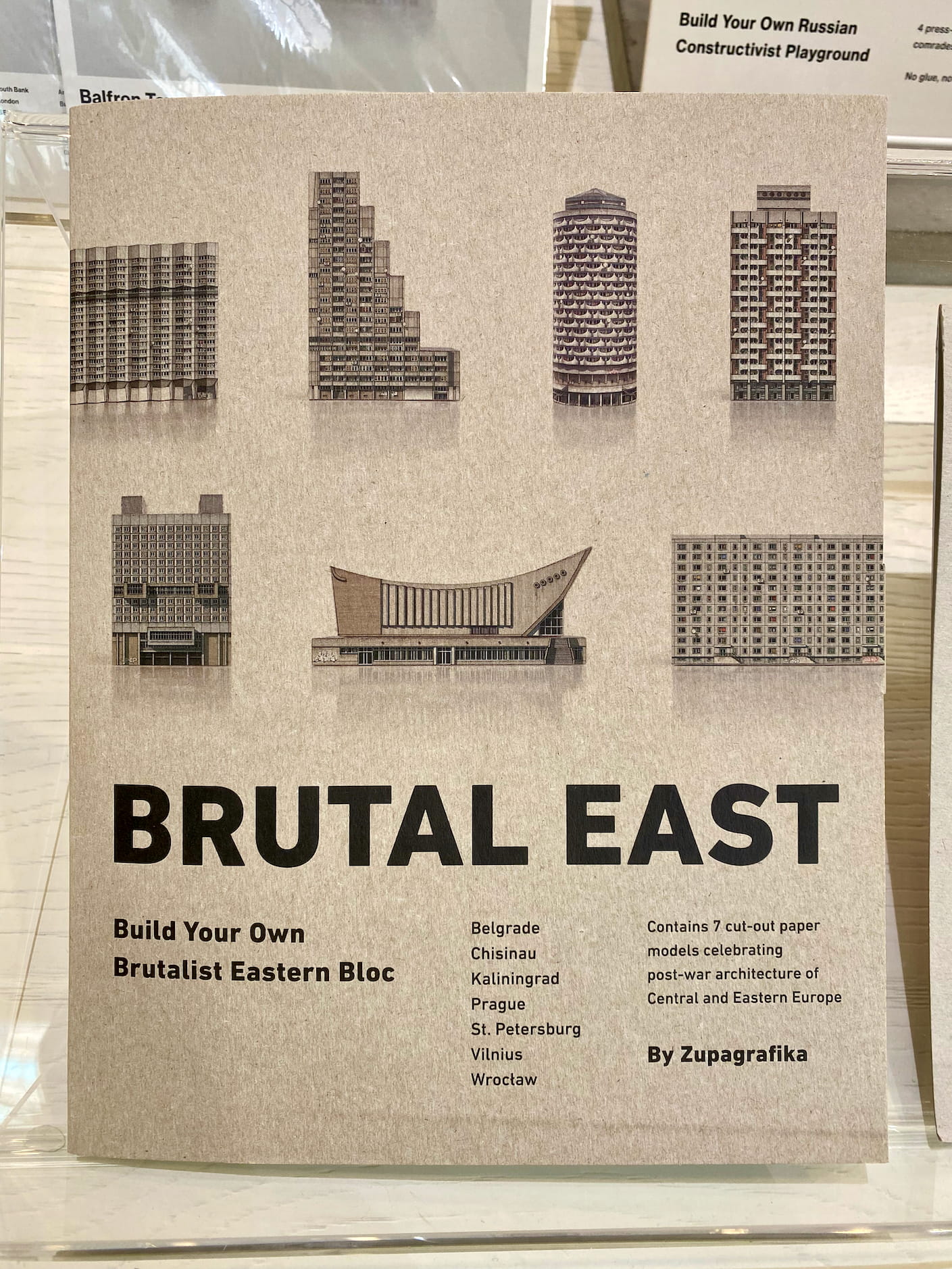

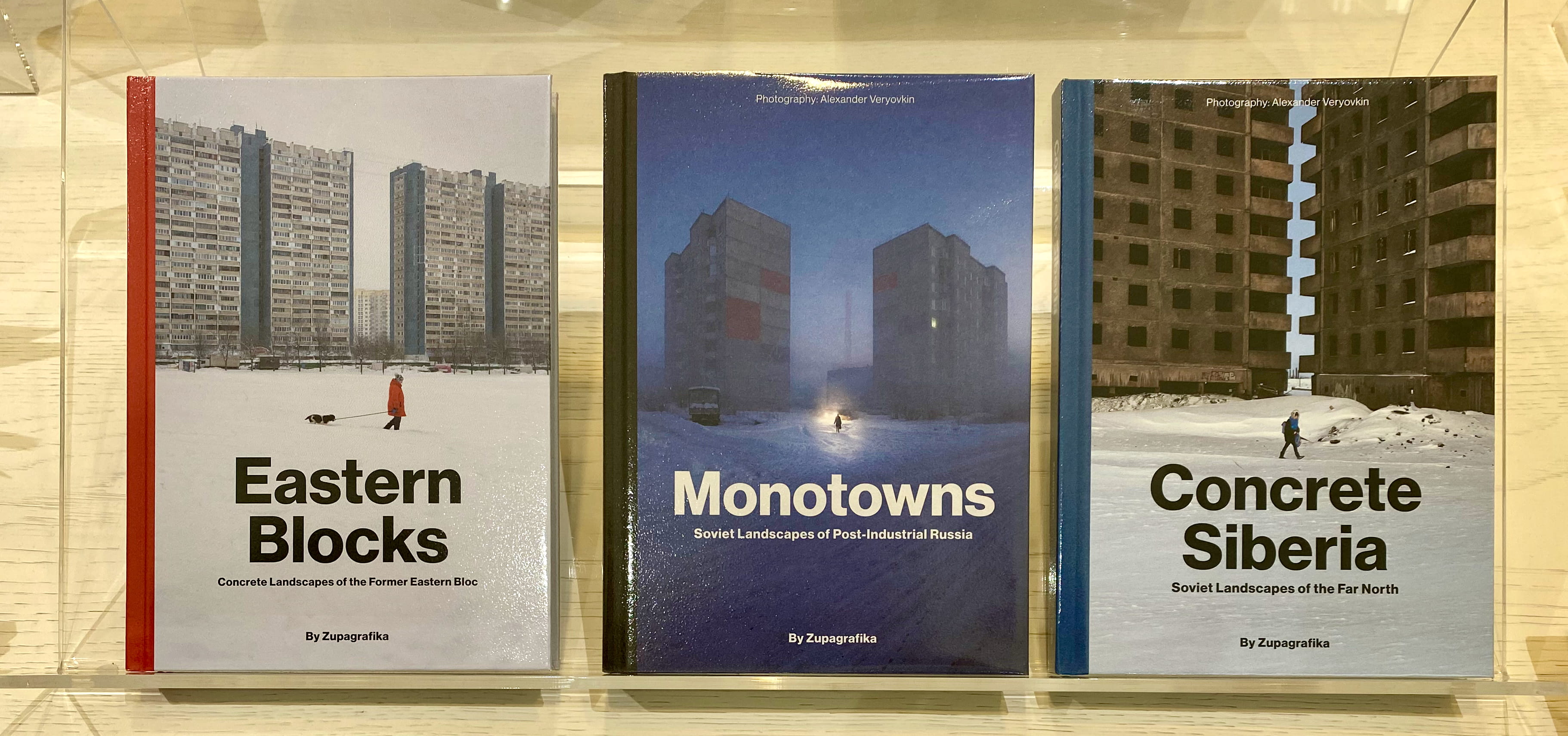
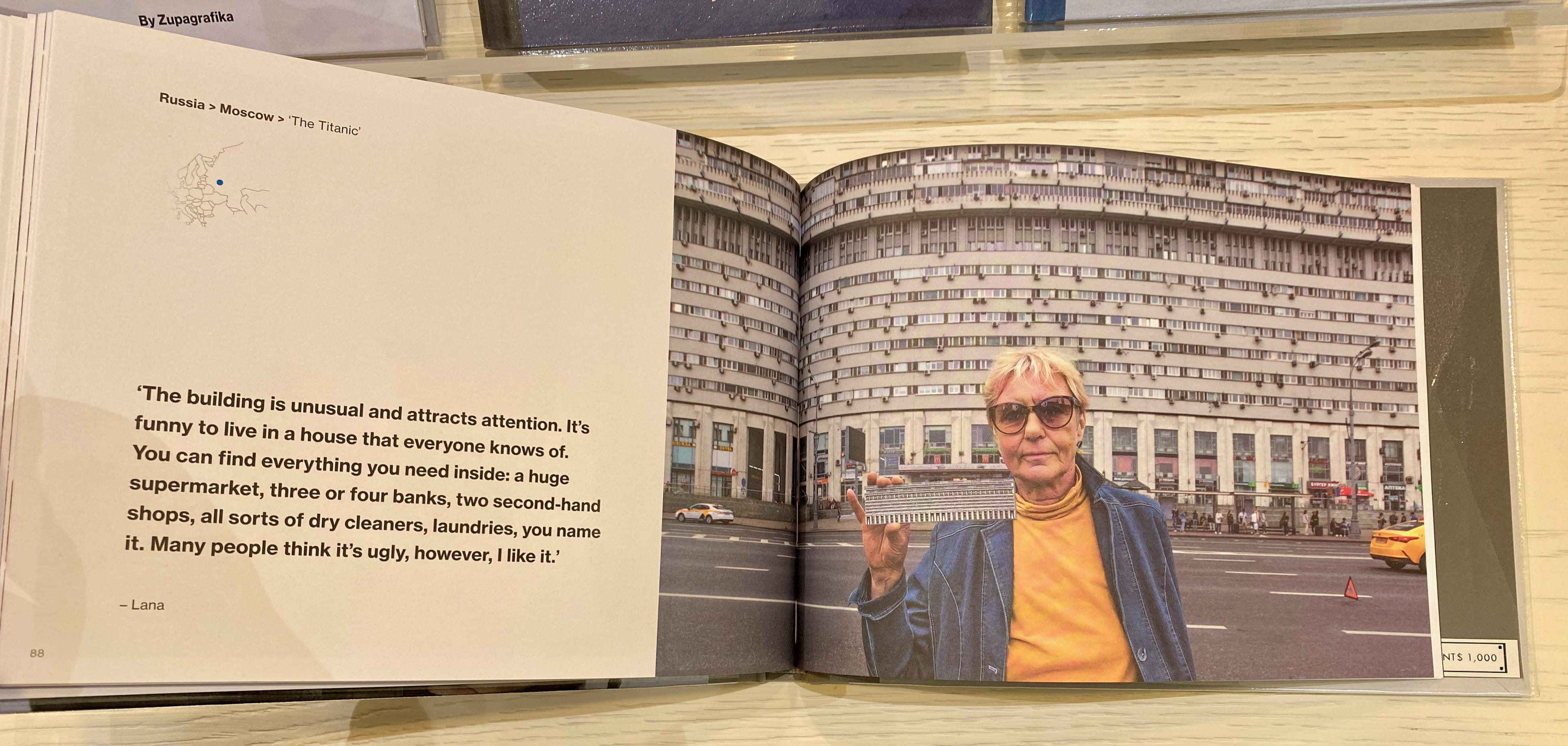
Delights and Oddities
Taipei demonstrated a level of cooperation I couldn’t fathom us performing in the States. At garbage times—which was multiple times a day—people would bring their trash out in designated official trash bags. So far so good. But then people would wait, with their garbage, on the side of the road for the trash truck to come. The garbage trucks played a jingle so you’d know when they were coming.17 Then, everyone would manually put their trash into the truck.
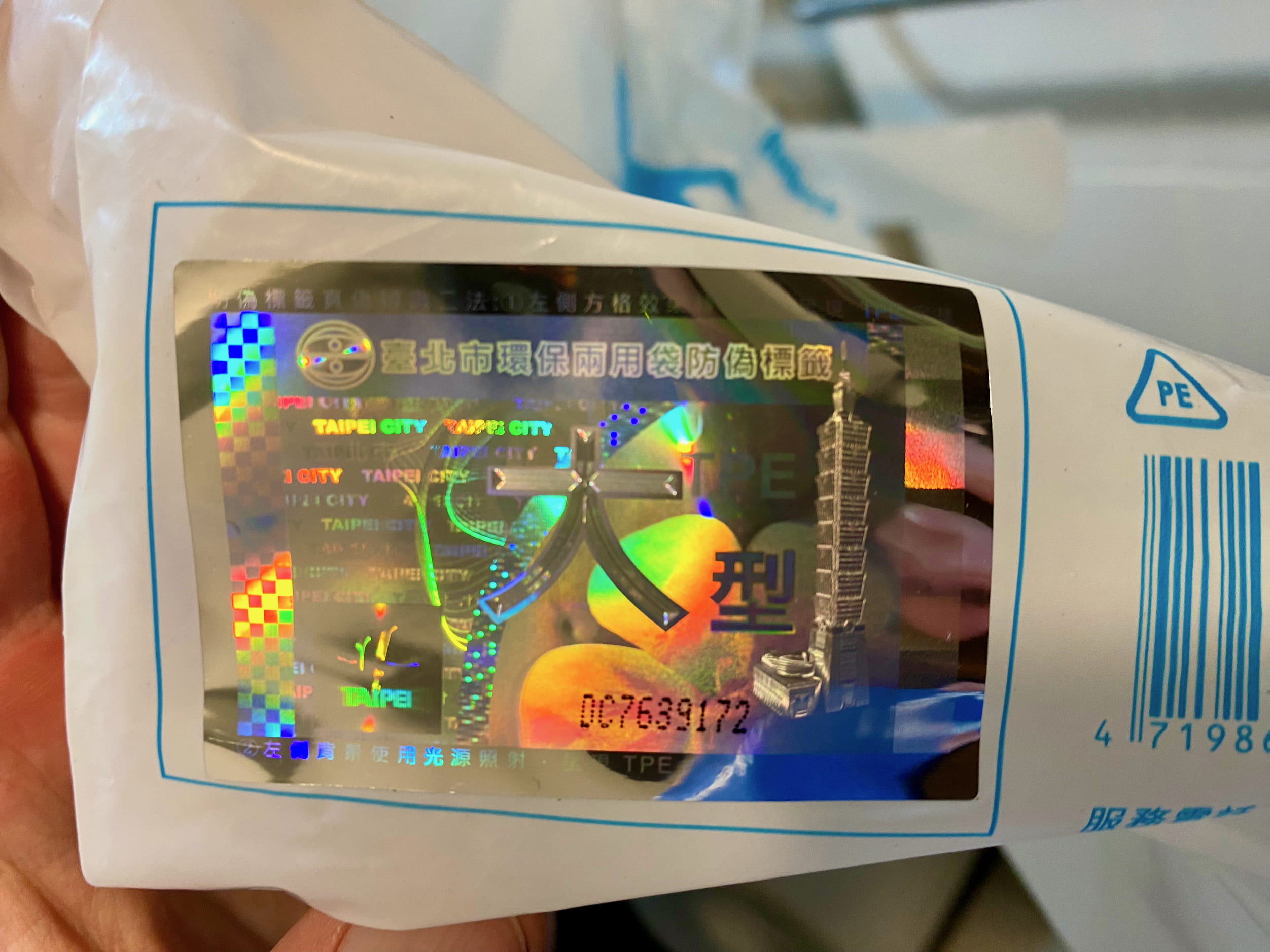
Holographic sticker grants trash bag official status. USA cities are doing an incredible job if most of the garbage just makes it into bags to begin with.
Now for more random stuff.



Lots of eagles??


Supermarkets had a section devoted to ginseng drinks, some with whole big roots in elaborate bottles. Fair enough. But the strange thing was, Quaker, purveyor of oats, had gotten in on this market, and expanded to related product lines like drip essence of chicken.

A free library full of design books and magazines.

Pedaling apparatuses which then shoot water out of funny tubes. I assumed until now it was some kind of demo of energy generation, a la what you’d find at a children’s science museum. But as I write this, I realize it’s probably just more free outdoor exercise equipment, and the weird tube shapes and water ejection and bright colors just make the whole thing more fun to do.

This product magnifies the line under it and highlights it with a color of your choosing (available in yellow, green, etc.). I am thankful I do not have to read such small fonts and also now understand why 95% of Japanese 12-year-olds are already myopic (not kidding).

Command hooks on polished granite. Maybe this is what really fancy dorm rooms are like.
Sometimes, all it takes for a good sign is just a brutally direct translation.

They weren’t joking. We did not eat there.

This is the kind of thing that would have been dystopian in Singapore but was harmless here.
Also found a few good rule notices.

Awkward silence is mandatory.

If you were wondering what sign would maximally annoy skateboarders, this is it.

These benches (ignore the disrepair) spell the name of the mountain.

We happened to visit a big park in New Taipei on 2/28 (public holiday), and found a mecca of tents and activities, framed by the elevated airport line. I guess this one’s not weird it’s just pleasant.

Basketball courts frequently appeared by the dozens in parks. While it initially has the flavor of soulless, almost brutalist design, I realized there’s serious utility to this grouping: (1) If you want to find a pickup game, you’re more likely to succeed if more people are coming to one place; (2) Conversely, if you’re trying to find an open court, it’s helpful to build a ton of them together in one spot. In Seattle, when I want to play tennis with someone, we sometimes have to drive to three or even four locations, each with just two courts, spread way across multiple districts, to find an open one.

This subway stop had, inside of it, a gargantuan ping pong arena. Probably same logic as above with basketball courts.
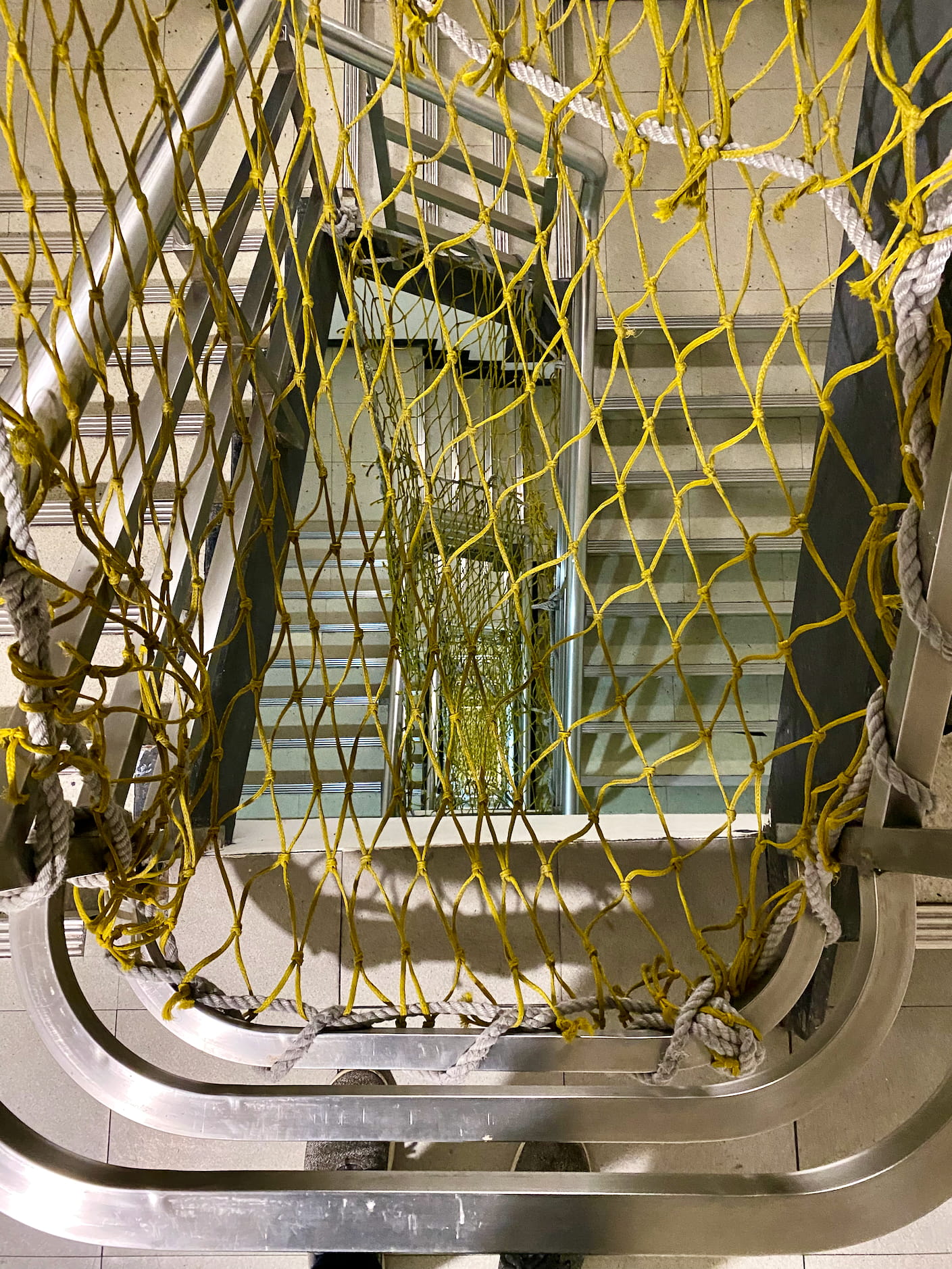
Every single staircase and escalator had netting over the side drop. I’m not sure whether this was to stop objects or humans. Maybe both.
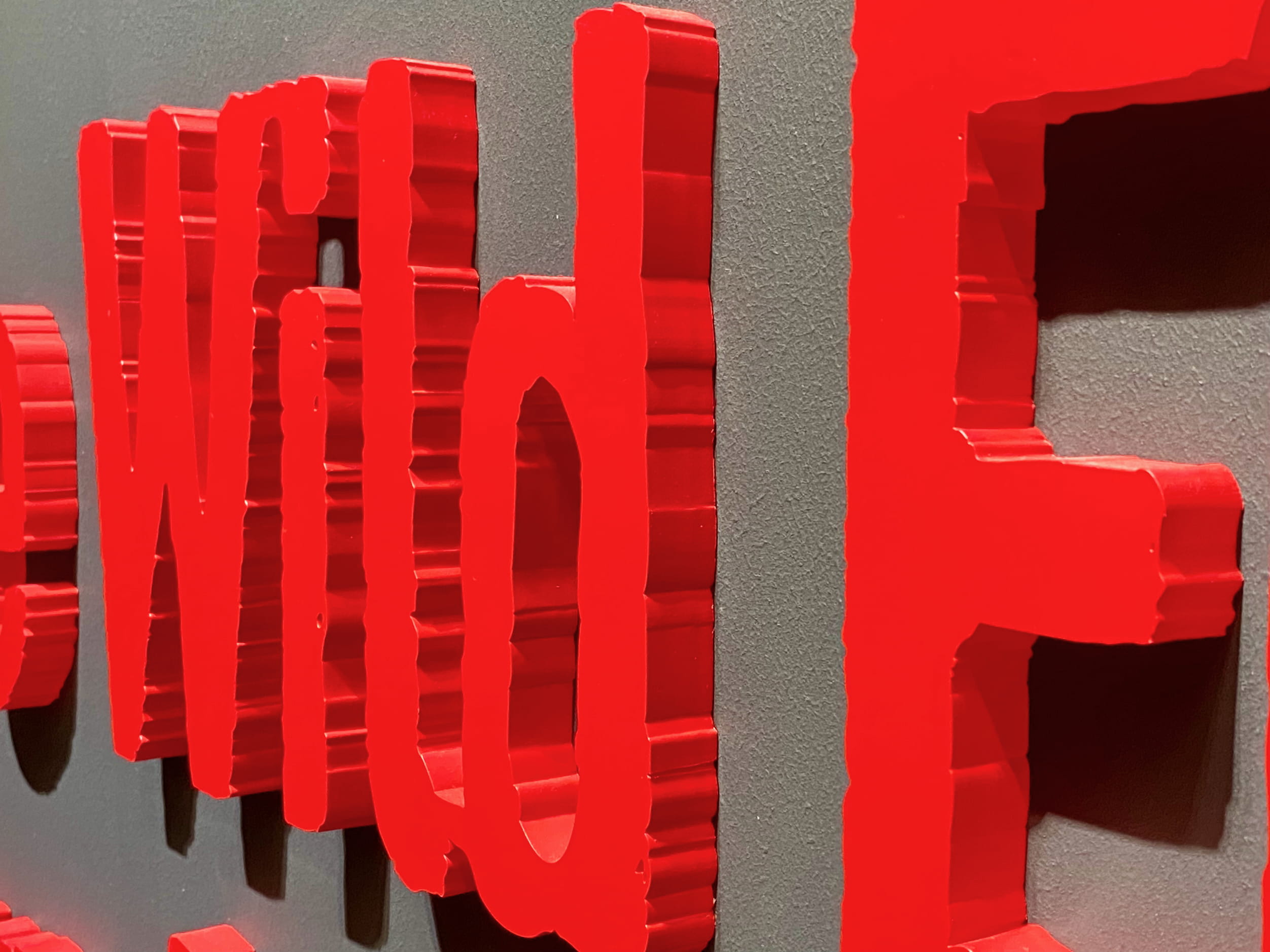
This museum sign had kind the rough edges that evoked 3D printers. Not sure whether that was the intent, but for some reason I liked it. Maybe you just like references if you think you get them.

This saucer had an elevated grove that perfectly fit the underside of the coffee cup. Unlike outer groves which seem to encourage tipping, this one prevented it.
This video was trying to convey that the content was futuristic, so they did the whole small-font scrolling-text FUI (futuristic UI) thing. I couldn’t help but read the text itself and saw good old lorem ipsum staring back.18


An even better futuristic screen was this glitching one at a train station that seemed straight out of some cyberpunk flick.
The combination of information and advertisements, the mixture of advertisements themselves, the variety of the glitching effects, the overall cadence… you’d have to pay big bucks to design something this good.
Bye Taipei, hello a bunch more of Taiwan
Coming up next, we circumnavigate the island.
Footnotes
I’m combining the cities of Taipei and New Taipei, which are squished right up next to each other, when calling it the largest city. One-third of Taiwanese people live in Greater Taipei (source). ↩︎
Seoul’s metro is in turn one step down from Tokyo’s. Each step is a seismic jump, though. ↩︎
Counting exits may seem like a weird way to describe the size of a place. But it does seem to correlate pretty well to the scale of underground infrastructure. Plus, exists are very well-numbered and diagramed, which makes them helpful for ballparking. ↩︎
If curious: February 28 massacre ↩︎
Mileage varies, of course. I would guess some people would start meeting people in earnest after one day, and others, never. ↩︎
Thank you, Riley and Tristan! ↩︎
I tried looking up the whole Taiwan / Japan relations thing. I remember from my last visit with a friend and local (thank you, Elaine!) that Taiwanese people were cool with Japanese people and cultural exports. I couldn’t help but wonder… no hard feelings from the whole fifty years of colonialism thing? ChatGPT told me, nah, it’s fine. So I guess it is. ↩︎
E.g., I’d be like, OK, that’s the character for “don’t” and the one for “car,” but I don’t know the middle one. It’s probably “no parking.” But since it’s in front of somebody’s driveway, you could kinda get it from context. ↩︎
Malaysia and Singapore did switch to simplified. Source for all this, of course: Wikipedia: Simplified Chinese. The most interesting thing I learned from the page on traditional Chinese was that the USA uses traditional Chinese characters when it sends out notices translated to Chinese. Quoth: “Having immigrated to the United States during the second half of the 19th century, well before the institution of simplified characters, Chinese Americans have long used traditional characters. Therefore, US public notices and signage in Chinese are generally in traditional Chinese.” ↩︎
Thank you to Elaine for illuminating this for me! ↩︎
E.g., “Although use of the traditional form 臺 is encouraged by the ROC [Taiwan] Ministry of Education, the variant 台 is commonly used instead” (source). ↩︎
This is one huge part of fast travel (i.e., visiting many locations) that’s rarely talked about. You’re constantly waiting in lines for things. Customs, passport checks, baggage checks, security, boarding, delays, issues, bus lines, etc. ad nauseam. ↩︎
You also have to buy their phone case in order to screw the lens onto the phone. However, not only makes sense (how else you gonna attach it?), but the case is robust, handsome, and well-priced. I’ll happily keep using the case even if I ditch the lens. ↩︎
And don’t have a super recent iPhone that does face unlock with your mask on. ↩︎
Here’s a joke we had in jazz band: how do you get two alto (saxophone) players to play in tune? Kill one of them. Now, imagine a band entirely composed of saxophones. ↩︎
And wondering how long it’s been that way (mainstream), and then wondering whether it was already mainstream when you got into it, oh no, am I just a cog in the machine (obviously yes), etc etc etc. ↩︎
In quieter towns we’d visit in the future, the garbage truck jingle would be the only sound filling the evening air. It’d waft from multiple trucks making their rounds in the city, their various doppler’d nursery rhymes combining into a haunting faint cacophony. ↩︎
If you haven’t spent time pretending you’re a designer before, this will help explain: https://www.lipsum.com/ ↩︎
